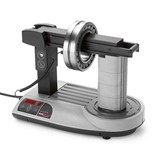There always seems to be a strong focus placed on recruitment, and rightly so. Find the best person for the job and worry about the rest later. It's a fine theory, so long as you really do worry about the rest later.
And by later we're talking about a matter of moments, not months, before you should set about welcoming the new staff member to the team, the culture and the expectations.
First impressions
It begins as soon as the person accepts the position. Give them a call to let them know how excited you are for them to get started, and follow it up with a polite email outlining all the important details. Welcoming new staff is an overall attitude, not a box to tick on their first day.
Speaking of first days, this is the perfect opportunity to lay the foundations for strong internal relationships and clear lines of communication – not just within small teams but also across departments. Make proper introductions to each individual, and keep things friendly and relatively informal.
Remember the details
New staff will appreciate the warm welcome, but they will also want to feel confident that they understand all those little details that existing staff take for granted such as shift times, dress code, OH&S protocols, and the location of amenities. Don't force them to ask about these things; they should know them from the very beginning.
It's a good idea to use a staff orientation checklist to ensure no information is forgotten. You might be surprised at how many important topics need to be covered.
Use every available tool
You will probably have some useful information printed off as a handbook for the new person to read through in a quiet moment, while some companies use custom videos to explain their practices.
What other methods might help? Consider seating plans or technology such as induction software, for example. Perhaps most importantly, make the most of the expertise in your existing staff. Each team member has their own skills and specialties, so get them involved in the comprehensive training plan. If only one person takes responsibility for the induction process, you might find the new employee clones that person's bad habits as well as their good ones.
Tailor the training
No two companies, departments, job descriptions or staff members are identical, so why should an induction process be one-size-fits-all? Be creative and innovative, personalise your support, and above all else treat induction like it matters.
Remember that contractors are employees too, and they need to be inducted accordingly to avoid issues related to unclear instructions, inability to login to IT systems, or poor communication with full-time staff.
Finally, assuming you hired well to begin with, you should be able to rely on a well-trained, happy and productive new employee.





